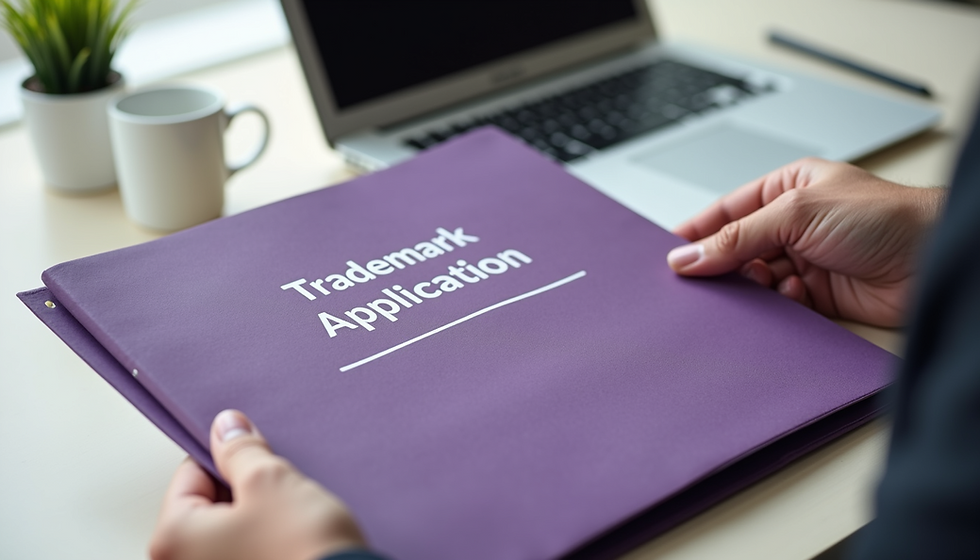Got a “Notice of Non-Acceptance”? Don’t Panic
- GOMAXGROUP

- Oct 24
- 3 min read
Intro
On 20 October 2025, China’s National Intellectual Property Administration (CNIPA) officially launched its new online trademark filing portal—the most significant system upgrade in over a decade.
The revamp aims to enhance convenience, security, and overall user experience for online trademark services, better meeting the practical needs of applicants. The platform introduces a new user management system, allowing applicants to access and manage their filings via the “CNIPA Trademark Online Services” mini program on WeChat or Alipay, where they can also set reminders for pending tasks.
While the new portal makes trademark filing more efficient, it also introduces several new compliance rules that applicants should carefully note.

Applicants may now save an in-progress draft, yet once the “Confirm Submit” button is pressed the portal immediately assigns an application number and locks the file. Should a typo, incorrect class or imprecise goods description be discovered thereafter, the only remedy is to withdraw the entire application and re-file—receiving a new number.
For minor mistakes, one may opt to leave the original filing untouched and await an office action, but there is a real risk that the examiner will instead issue a Notice of Non-Acceptance.
The correction deadline remains thirty calendar days; however, the system delivers dual alerts via SMS and the WeChat mini-program, ensuring the cut-off date is not missed even if the e-mail notification is lost.
Finally, the platform’s duplicate-filing detection has been tightened: if the same applicant submits an identical mark within the same class group—even under a different application number—the later submission will be automatically rejected with a fresh Non-Acceptance notice.
Got a “Notice of Non-Acceptance”? Don’t Panic.
Receiving a Notice of Non-Acceptance does not mean there is a problem with your trademark. Rather, it indicates that the application materials or submission format failed to meet the statutory formality requirements, resulting in the filing being returned at the formality examination stage.
Based on our extensive experience handling trademark filings, we have summarized the most common reasons for non-acceptance below:
Common Reasons for “Notice of Non-Acceptance”
✅ 1. Incomplete or Improperly Formatted Application Documents
Missing essential materials such as identification documents or certified translations.
Inconsistency between the translation and the original document, or failure to meet formatting standards.
Power of Attorney not in the required format or missing the Chinese translation of the applicant’s name.
Trademark specimen exceeding the size limit, blurred, or not submitted in JPG format.
✅ 2. Irregular Information Entry
Applicant’s name or address inconsistent with identification documents.
Goods or services not specified or described ambiguously.
Stamp or signature inconsistent with the applicant’s registered name.
Foreign-language materials not accompanied by a Chinese translation or missing the translation agency’s seal.
✅ 3. Fee or Procedural Issues
Failure to pay the official application fee within the prescribed period.
Failure to submit corrections within the deadline, or corrections still failing to meet requirements.
Duplicate submission of identical applications (e.g., resubmitting the same mark without withdrawing the previous one).
✅ 4. Applicant Qualification Issues
Domestic individual applicants not providing qualification documents required under Article 4 of the Trademark Law, such as a business license for individual industrial and commercial households.
Joint applicants failing to submit the co-applicant annex page or missing required signatures or seals.
✅ 5. Other Special Circumstances
The trademark specimen contains elements prohibited by law (e.g., national flags, emblems, or discriminatory symbols). While such violations are usually addressed during substantive examination, specimens that are clearly illegal may be rejected during the formality stage.
3-Step Rescue Plan
Match each refusal point against the CNIPA’s official checklist (we translate it for you).
Re-assemble, stamp, pay, and re-file—often within the same day.
Still disagree? File an administrative reconsideration within 15 days; we prepare the full pleading in both Chinese and English.
Why Experienced Representation Matters
Working with a trademark agency experienced in handling filings for foreign applicants can save both time and money. Skilled agents understand CNIPA’s latest technical and procedural requirements, ensuring every document, translation, and formatting detail complies with the new system before submission.
By contrast, inexperienced agencies often make avoidable mistakes—leading to repeated returns, withdrawals, and re-filings. Each error means extra fees, lost time, and delayed brand protection. Choosing a qualified, China-based trademark agency from the start helps you file once—and file right.
👉 Ready to bullet-proof your next China trademark?
Book a free 15-minute diagnostic call or e-mail trademark@gomaxgroup.com.
Our bilingual experts will review every document before it reaches the CNIPA server—so you never see that dreaded “Notice of Non-Acceptance” again.



